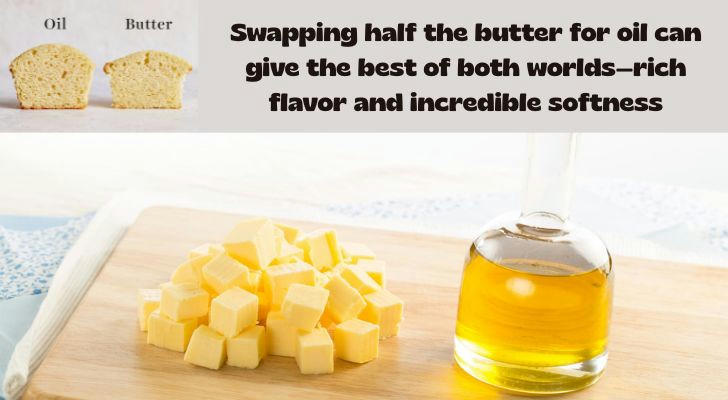How to Make Your Cake Extra Fluffy? The Science Behind Perfect Texture
Nothing is more disappointing than expecting a soft, airy cake and ending up with something dense and dry. Achieving that perfect, melt-in-your-mouth texture isn't just luck—it’s science! Understanding a few key factors can turn any cake into a masterpiece. Let’s break it down and uncover the secrets to an ultra-soft cake.
1. The Role of Fat: Butter vs. Oil 🧈🌻

Fat plays a crucial role in cake softness. It coats the flour proteins, preventing too much gluten from forming. But not all fats are equal.
• Butter (80% fat, 20% water): While it adds great flavor, it solidifies at room temperature, making cakes denser. • Oil (100% fat): Since it remains liquid at room temperature, it creates a more tender, moist crumb.
Pro Tip: Swapping half the butter for oil can give the best of both worlds—rich flavor and incredible softness.
Additionally, the type of oil used also matters. Vegetable oil and canola oil are neutral-flavored and work well for most cakes, while olive oil can add a subtle fruitiness. Experimenting with different oils can lead to interesting textures and flavors!
2.*Eggs: The Balancing Act 🥚
Eggs provide structure, but too many can make a cake tough. The key is balance:
• Whipping egg whites separately before folding them into the batter adds air and lightness.
• Using room-temperature eggs ensures even mixing and a smoother texture.
📊 Science Says: A study from the American Chemical Society found that cakes with properly aerated egg whites had 15% more volume than those mixed regularly.
Another trick is to slightly reduce the number of whole eggs and replace them with extra egg yolks. The yolk contains emulsifiers that help create a smoother, more tender crumb while maintaining moisture.
3. Sugar Isn’t Just for Sweetness 🍬
Sugar does more than make cakes sweet—it also tenderizes and locks in moisture. Here’s how:
• It delays gluten formation, keeping the cake tender.
• It absorbs moisture, preventing dryness.
Best Practice: Creaming sugar with butter for at least 3-5 minutes incorporates more air, making the cake fluffier.
In addition, brown sugar can be a game-changer! It contains molasses, which adds extra moisture and a slightly caramelized flavor. For an ultra-soft cake, try replacing 25% of the white sugar with brown sugar.
4. Baking Powder & Baking Soda: The Right Amount Matters 🏺

These leavening agents create bubbles that lift the cake, but using too much or too little can cause problems:
| Leavening Agent | Function | Potential Issue When Misused |
|---|---|---|
| Baking Powder | Creates CO₂ gas when mixed with liquid & heat | Too much = bitter taste; Too little = dense cake |
| Baking Soda | Reacts with acidic ingredients (buttermilk, lemon) to create CO₂ | Too much = soapy flavor; Too little = no rise |
Golden Ratio: About 1 teaspoon of baking powder per 1 cup of flour works best.
Also, be sure to check expiration dates on baking powder and baking soda! Old leavening agents lose their effectiveness, leading to cakes that don’t rise properly.
5. Mixing Technique: Less is More 🎂
Overmixing is a common mistake that leads to dense cakes. When flour meets liquid, gluten starts forming. Too much stirring strengthens the gluten network, making the cake tough.
Solution:
✅ Mix just until ingredients are combined.
✅ Use the “folding” method instead of vigorous stirring.
A good test? If there are still a few small streaks of flour in the batter, stop mixing! They will disappear during baking without affecting the texture.
6. Oven Temperature: The Silent Culprit 🔥
An oven that’s too hot can cause the cake to rise too fast and then collapse. Too cool? The cake will be dense.
📊 Ideal Range: 325°F - 350°F (162°C - 177°C)
Pro Tip: An oven thermometer ensures accurate baking temperatures, as some ovens can be off by 25°F!
Also, avoid opening the oven door too often. Sudden temperature drops can cause the cake to sink in the middle.
7. The Milk Choice: Whole vs. Buttermilk 🥛

Milk contributes moisture and affects texture:
• Whole milk adds richness and tenderness.
• Buttermilk (which is slightly acidic) interacts with baking soda to create more air pockets, making cakes softer.
Try This: Substitute regular milk with buttermilk for an extra boost of fluffiness!
For an easy homemade buttermilk substitute, mix 1 cup of milk with 1 tablespoon of lemon juice and let it sit for 10 minutes.
8. Cooling and Storage: The Final Touch ❄️
Even if a cake is baked perfectly, improper cooling can ruin its texture.
• Cool the cake in the pan for 10 minutes before transferring it to a wire rack.
• Never wrap a hot cake in plastic wrap—it traps steam and makes the cake soggy.
• Store cakes properly: If not serving immediately, wrap in plastic wrap and refrigerate to retain moisture.
Final Thoughts 💡
A soft, fluffy cake isn’t about luck—it’s about understanding ingredients and techniques.
✅ Use oil for moisture✅ Balance eggs for structure✅ Cream sugar and butter properly✅ Be precise with leavening agents✅ Avoid overmixing✅ Bake at the right temperature✅ Choose the right dairy products✅ Cool and store cakes properly
Next time a cake turns out dense, check these factors. Happy baking! 🍰
